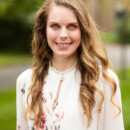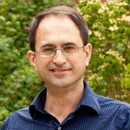Page 11 • (699 results in 0.035 seconds)
-

Scholarly Presentation: Curiosity Questions poster presented (by Dr. Carolina Illie), SUNY Oswego (Fall 2012) Northwest Section American Physical Society, Co-author Conference Research Presentation: Research Intern, Matthew Hubbard presented “ How tongue size and roughness affect lapping, Vancouver, B.C., Canada (Fall 2012) 2012 National meeting of American Association of Physics Teachers, Scholarly Presentation: “ Pre-Course Student Questions as Motivators for Class Lessons, Philadelphia, PA (August
Area of Emphasis/Expertise -
; suitable for liberal arts students, nursing students, physical education majors, and prospective teachers. Students who have not completed high school chemistry recently should take CHEM 101 before taking CHEM 105. Prerequisite: Math placement in MATH 140 or higher; or completion of MATH 115 with a C or higher. (4) CHEM 115 : General Chemistry I - NW Topics explored include the structure of matter, nomenclature, atomic and molecular theory, periodic relationships, states of matter, quantitative
-

Lark Powers Associate Professor of Music - Piano; Advising Associate for Music Phone: 253-535-7647 Email: powerslm@plu.edu Office Location: Mary Baker Russell Music Center - 115 Office Hours: (On Campus) Mon - Fri: By Appointment Professional Biography Education D.M.A., Piano, University of Colorado Boulder M.M., Piano Performance, Peabody Institute M.M., Harpsichord Performance, Peabody Institute M.M., Theory Pedagogy, Peabody Institute G.P.D., Peabody Institute D.E.M., Conservatoire National
Office HoursMon - Fri: -Area of Emphasis/Expertise -

Lark Powers Associate Professor of Music - Piano; Advising Associate for Music Phone: 253-535-7647 Email: powerslm@plu.edu Office Location: Mary Baker Russell Music Center - 115 Office Hours: (On Campus) Mon - Fri: By Appointment Professional Biography Education D.M.A., Piano, University of Colorado Boulder M.M., Piano Performance, Peabody Institute M.M., Harpsichord Performance, Peabody Institute M.M., Theory Pedagogy, Peabody Institute G.P.D., Peabody Institute D.E.M., Conservatoire National
Office HoursMon - Fri: -Area of Emphasis/Expertise -
Jennifer Rhyne Associate Professor of Flute and Music Theory Full Profile 253-535-7058 rhynejl@plu.edu
-
Jennifer Rhyne Associate Professor of Flute and Music Theory Full Profile 253-535-7058 rhynejl@plu.edu
-

Bogomil Gerganov Associate Professor of Physics he/him/his Phone: 253-535-7774 Email: beg@plu.edu Office Location: Rieke Science Center - 252 Professional Additional Titles/Roles Engineering Dual-Degree Program Director Education Ph.D., Physics, Cornell University, 2000 M.S., Cornell University, 1997 B.S., Sofia University (Sofia, Bulgaria), 1993 Areas of Emphasis or Expertise Non-Linear Cardiac Dynamics Integrable Systems Quantum Field Theory Spin-spin Interactions of Magnetic Molecules
Area of Emphasis/Expertise -
: Semiconductor Nanocrystals – From Atomistic Insights to Applications (July 2018) “Examination of the Decomposition of Phenyldithiocarbamates during Nanocrystal Ligand Exchange” Andrea M. Munro oral presentation at Telluride Science Research Center: Nanomaterials – Computation, Theory, and Experiment (July 2017) “Characterizing the Effects of Dithiocarbamate Ligands on CdSe Nanocrystals” Andrea M. Munro at Pacifichem 2015 (Dec. 2015) “Investigating Interactions Between CdSe Nanocrystals and Dithiocarbamate
-
Infectious Disease Sciences Summer Scholars Internship Program Fred Hutch Cancer Center Posted by: alemanem / February 24, 2023 February 24, 2023 Fred Hutch Infectious Disease Sciences (IDS) is a pre-eminent program of internationally recognized clinicians and researchers seeking to train the next generation of leaders in infectious diseases that affect immunocompromised individuals. Their Summer Internship Program promotes our core values of diversity, equity, and inclusion to enhance
-
, weaving, nålbinding and more. Along with that it displayed the dyeing process, what’s used and how, as well as the myths and folklore surrounding it. The exhibit also showed how some of our modern products are produced, where the techniques come from, and how they affect our daily lives. The SCC displayed costumes from our collection, including examples from the Sámi, Icelandic, Norwegian, Finnish, Danish and Swedish pieces. Although textiles are important as cover and protection, they also portray
Do you have any feedback for us? If so, feel free to use our Feedback Form.


